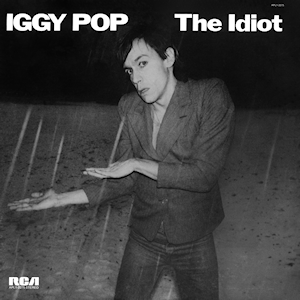The Idiot, o primeiro álbum de estúdio do músico americano Iggy Pop, foi lançado a 18 de março de 1977 pela RCA Records. Foi produzido por David Bowie e gravado principalmente no Château d'Hérouville ,na França. Lançado após a separação dos Stooges, marca um período em que Bowie e Pop se mudaram para a Europa, num esforço para se livrarem do vício das drogas.
Descrito por Iggy como "um cruzamento entre James Brown e Kraftwerk ", The Idiot marca uma mudança de som do proto-punk dos The Stooges para um som mais suave, sombrio e mecânico, com nuances eletrónicas. A gravação começou no Château em junho de 1976 e prosseguiu até julho. Outras sessões aconteceram no Musicland Studios, em Munique, em agosto. Bowie compôs a maior parte das melodias e contribuiu com grande parte da instrumentação, enquanto Iggy concentrou-se principalmente na escrita das letras, em sintonia com a música que Bowie estava desenvolvendo. O título do álbum foi inspirado no romance O Idiota, de Fiódor Dostoiévski, enquanto a arte da capa é uma releitura da tela Roquairol de Erich Heckel.
Após a conclusão do disco, Bowie começou a gravar o seu próximo álbum, Low, que apresenta uma sonoridade semelhante a The Idiot. Low foi lançado em janeiro de 1977 e foi um sucesso comercial, obrigando a RCA Records a lançar The Idiot dois meses depois. Após o seu lançamento, o álbum recebeu críticas divididas, embora amplamente positivas, dos críticos musicais, muitos dos quais notaram uma mudança no tom musical em relação ao trabalho anterior de Iggy com os Stooges. Foi acompanhado pelo lançamento de dois singles, "Sister Midnight" e "China Girl", em fevereiro e maio de 1977, respetivamente. Mais tarde, Bowie lançou a sua própria versão de "China Girl", como single em 1983.
Iggy promoveu o álbum com uma turnê entre março e abril de 1977, com Bowie como teclista. Posteriormente, ambos colaboraram novamente no segundo álbum de estúdio de Iggy, Lust For Life. O álbum influenciou bandas de pós-punk, industriais e góticas, incluindo os Joy Division. Segundo se conta, em 1980, o vocalista da banda Joy Division, Ian Curtis, cometeu suicídio enforcando-se na cozinha da sua casa enquanto ouvia este álbum.
in Wikipédia



